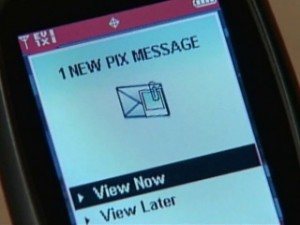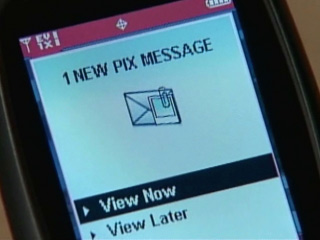 The journal Pediatrics has published a new study on the prevalence of teens sending sexually explicit texts and nude images of themselves to other teens. The study reports that 2.5 percent of children interviewed age 10 to 17 have appeared in or created somewhat or nearly nude photographs or videos. However, only one in 100 has created images that are sexually explicit enough to be considered a breach of child pornography laws, such as showing breasts, genitals or bottoms.
The journal Pediatrics has published a new study on the prevalence of teens sending sexually explicit texts and nude images of themselves to other teens. The study reports that 2.5 percent of children interviewed age 10 to 17 have appeared in or created somewhat or nearly nude photographs or videos. However, only one in 100 has created images that are sexually explicit enough to be considered a breach of child pornography laws, such as showing breasts, genitals or bottoms.
The study, published Dec. 5th, is based on 1,560 in-depth telephone interviews with minors. It is one of the largest surveys yet to examine the subject.
Due to some high-profile cases in recent years in which teenagers were arrested for forwarding nude pictures of other minors to friends and peers, the issue has gathered national focus. But the study shows the practice is not widespread among teens and is actually more prevalent among young adults than minors.
Janis Wolak, a senior researcher at the Crimes Against Children Research Center in New Hampshire told the New York Times, “It only takes one or two cases to make people think this is very prevalent behavior. This has been reported as if it were something that everyone was doing, not just the teen population but in the young adult population. It’s really not the case.”
This study supports her point as only 7.1 percent of the youths interviewed said they had received images that included partial or full nudity and only 5.9 percent reported that they had forwarded images.
One third of the messages were sent or created when drugs or alcohol was involved, pointing to a larger problem involving high-risk behavior. In most cases, when asked about the motivations behind sending the messages, those interviewed said it was not with malicious intent, and that most of the time it was with someone they were in a relationship with.
In June, JJIE reported on the legal consequences of sexting for teens (and the relatively lighter consequences for sexting politicians) and the New Jersey bill that would stress education over prosecution for teens caught sexting.
Photo: Politicspa.com

This is a useful study in that it dispels some of the myths about sexting. It would have been even more useful if it had distinguished between nudity and sex. They are not the same thing and confusing the two results in serious harm. The connection may not be as immediately obvious as an assault but that does not make the harm any less real or any less serious.